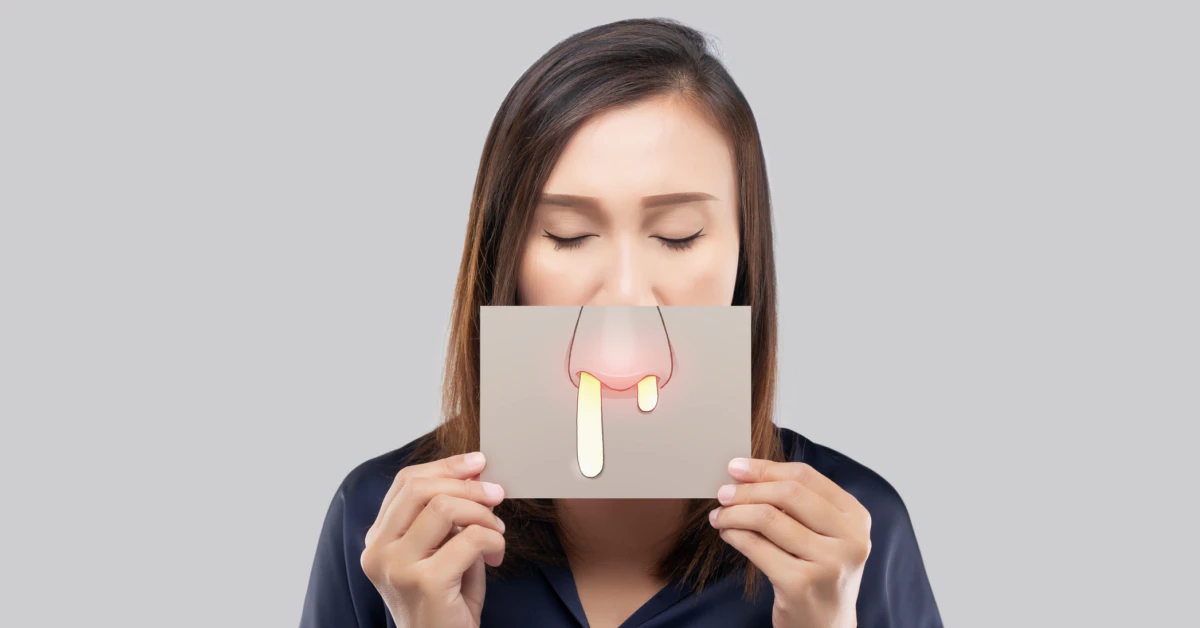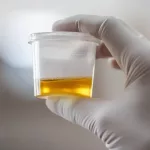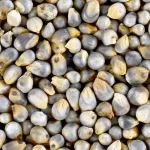Let’s cut to the chase: thick, weird-colored snot isn’t just gross—it’s your body’s way of waving a little flag. Explanation first, embarrassment later. Yellow mucus? Your immune system’s throwing a party—or a viral cold. Green snot? Yeah—that’s not a sign of a TikTok myth. It’s a signal your white blood cells are working overtime. Still got Clear snot but feel like dying? Probably just allergies, not a death sentence. And if you’ve had black mucus for days and your hobby isn’t powerlifting coal sacks? Yeah, maybe call someone who knows about stuff like that.
Here’s the deal: mucus gets no respect. Scientific asides? Who cares. We all just want to know one thing—when to clean our nostrils and when to run to our doctors. Let’s stop staring at tissues like they’re tarot cards. Instead, let’s get you smart enough not to reach for antibiotics at the first speck of green. Sound good?
Rainbow Snot
It happens. You’ve been sniffing around for two days. All of a sudden, your nose looks like a tie-dye experiment. Here’s what every snot color means—but spoiler alert—not always what you’ve heard on late-night Reddit threads.
Clear Snot: The Boring Baseline
Clear, thin, snot that could practically fund a rehydration plant. That’s your healthy default. Just like your body making tears or sweat, your nose cranks out mucus 24/7—no appointments, no alarms.
So why all of it on your face now?
Allergies are a major cause. Think pet dander, pollen, or that dusty air freshener you finally opened in 2023. Your nose is just trying to expel invaders, though it rarely works—because you bought it. Still, clear nasal discharge is usually nothing a claritan can’t fix.
Want proof? According to Alyssa Smolen, an advanced practice nurse at OSF HealthCare, “Clear mucus is nothing to worry about. If it’s an inconvenience, over-the-counter medicine can help.”
Yellow Snot: The nostrils scream “Something’s up!”
You blew your nose. There it is—a neon yellow warning. Your body’s not infected yet. Well, maybe.
- Yellow snot means: immune cells flooded into your sinuses.
- The yellow color is those white blood cells doing their thing before they pass out (literally).
Maybe you’re just days into a cold or fighting off a mild infection. But it’s not time to flip out. Yellow snot can mean your cold’s about to peak before it clears. As Cleveland Clinic ENT specialist Dr. Raj Sindwani explained, “It’s a signal, not a full alarm. Yellow or green mucus means you might have an infection—but that’s only part of the story.”
Quick personal story. My cousin once showed me a screenshot of her kid’s yellow snot and said, “I’m calling the doctor tonight!” I calmly (and with zero medical degree) asked, “Have other symptoms?” Turns out, besides the snot, the tyke was still doing cartwheels around the living room. Mild cold, nothing systemic. Just H2O and tissues until Tuesday. Like I said—context matters.
Green Snot: Immune system throws a party
This section goes hard. Green mucus? So much white blood cell activity that their little metal party ghosts (enzymes with iron) colored your snot. Don’t panic though.
- Green phlegm = your body clearing out the mess without antibiotics (usually).
- But if green’s been happening every day for 10-ish days and it feels like your sinuses joined a rock band permanently —then call your MD, fast.
And get this: Cleveland Clinic scientists claim we produce so much mucus daily that if we bottled it—it’d make Ariana Grande’s “Thank U, Next” of bodily fluids.
Table: Viral vs. Bacterial Cold
| Feature | Viral Infection | Bacterial Infection |
|---|---|---|
| Mucus Color | Yellow / Green, but can clear in 5–10 days. | Persistent green beyond 10–12 days, or fever keeps getting worse. |
| Common Triggers | Common cold, flu | Sinusitis, pneumonia |
| Best Response | Rest and one humidifier session (or 7). | See doctor. Lingering symptoms need intervention. |
Still confused even post-table? OSF HealthCare’s post confirms green mucus doesn’t mean antibiotic time like 2008 Reddit suggested. If your nose’s been green for less than a week, the party’s still going. But past 10 days? Urgent care clinic might be in order.
Red or Pink Mucus: The Tissue Knows
Seeing red in your snot? There’s only one basic reason: red means blood.
Relax, though. Frequent nose-blowing, dry air, or overusing nasal sprays usually spark microscopic blood speckles in your mucus.
Dr. Cindy Gellner in University of Utah Health’s article breaks it down: “Nasal passages get irritated. Pink or light red snot? Not a war drum. But if bleeding doesn’t stop after pressure, see someone who can check your o2.
My dry climate confession? Winter in Colorado? My bathroom counter’s always covered in petroleum jelly—because my red snot sightings shot up between January and March last year.
The Science of Gross
Mucus might be weird to stare at, but did you know your nose creates it all by itself? For klarification, you don’t need a PhD to spot red flags in your nostril. Just understanding why your mucus went from “invisible player” to “viral video topic” helps spot the next move.
What Mucus Really Does For You
Close your eyes (and your nose, if disturbing). Mucus isn’t just snot. It lines more than just your sinuses:
- Your stomach tract (the less sexy cousin of your nose).
- The tubes that move your food (esophagus).
- Your who-knows-where parts (respiratory and digestive tracts).
Harvard’s Dr. Robert Shmerling specifies on their blog: “Mucus lines your respiratory, digestive, urinary, and reproductive tracts. It’s a shield against germs—almost like a personal bodyguard that’s also invisible.
Why does the color change happen? Think back to basic chemistry. When your white blood cells rush the sinuses like they’re going to a buffet, they drop enzymes. The most popular—myeloperoxidase—has iron. Iron = universal ref for yellow/green dye.
Yellow and Green Val
Remember that snot science word we all thought was complicated? Here’s a flash version: thick green mucus might not shatter your world—just a sign of warfare between your immune and a virus.
Maybe you’ve blown your nose and muttered “This looks bad.” But actually, it’s your body’s checkout line after fighting infection.
Dr. Sindwani calmly trash-punched an online myth by saying: “The color of mucus alone doesn’t tell the whole story. You might have been sick a day or ten. It might be a moderate infection or something a humidifier will fix. Size up the whole scenario.”
Time to Worry
You got black mucus. Or maybe you started seeing pink and frothy snot lately. Either situation? Yeah, you should sit up and scratch your head (but not your nose, please).
Mucus can whisper confusion too. For example, pink snot from your lungs (not nose bleed) could mean bigger problems that people might not Google until midnight cardiologist calls.
Red Flags (Or Red Snot)
Red Snot Seems Normal
Let’s demystify. From MedicineNet’s article: red or pink mucus often means irritation with normal bleeding due to excessive nose-blowing. But if you’re not in touch with a doctor and see blood persistently, you might miss vascular issues or nasal polyps. Let’s not risk it.
Let’s talk about brown or black. Told a coworker your snot’s black and they told you, “Dude, you live near a cement plant or just smoke too much?” They’re kind of right. Black mucus similarity (BJC HealthCare):
- Might be inhaling too much tire smoke or dust.
- It could also mean you’ve been exposed to a fungal infection (yeesh).
Back to the medical web, and Hampton Family Practice suggests, “If your mucus isn’t clear and symptoms last more than a week, consider a call to your provider. Black mucus is extremely rare. It needs professional help.”
Rare doesn’t mean impossible. Take care of yourself—but don’t ignore outlier symptoms.
Cracking Snot Myths
Guess what? Snot levels don’t always equal sickness. Let’s correct speculation the internet still believes.
“But Green Snot = Antibiotics” (Spoiler: Nope)
We’ve all done it. Coughed up thick green snot, panicked, and opened Google Doctor: the unauthorized fan account.
But Harvard Health got wise and warned: “Changing snot color doesn’t mean you need antibiotics. Most colds are viral. Thicker, darker nasal discharge just means you’ve been fighting a few days. Period.”
- Yellow: happened after day 1 or 2 of illness
- Green: seen in the middle to late phase of colds, viral infections
- BUT: Color isn’t a silver bullet. Fever, face pain and unsteady health? Now let’s ask more questions.
Remember when antibiotics sounded like relief? They can cause harm with superbugs if overused. So unless your doctor says so, stop chasing that bottle like your nose has gone rogue.
Is Snot a Symptom Time Machine?
Answer: kinda. One elder’s advice to me—”if you sit on the fence with symptoms for more than 10 days, don’t wait. Otherwise, read about infection progress.”
Here’s the threshold weird snot symptoms that medical experts universally view:
- Green mucus over 10–12 days
- Fever you can’t sweat off
- Nasal pain or pressure you can feel with no clear injury
And on the flip side—discharge that’s turning public but your mood brightens? It’s just a normal cold day—no MRI needed.
Final Snot Read Through
You’ve read testimonies from breathing experts, passed on myth distortions. Messy nasal discharge is no stranger to your tissues, but now you can act wisely.
The cool facts (as stated by Dr. Robert Shmerling):
- Clear snot? Either normal or allergy-driven—either way, able to self-check by yourself.
- Green beyond 10 days? Causes are viral/bacterial. There’s nuance
- Black or pink-foamy mucus? One response: “See you later—I mean, a doctor”
Let’s track symptoms. Snot color + duration + actual health—your body talks to you more than your Instagram messages do. When symptoms match 10 days or more of the same discharge color, fatigue or sinus pain, don’t run to the pharmacy. Head to the doctor instead.
P.S. Want to dodge the guesswork? Cleveland Clinic’s official site summed it up simply: “Pay attention to health overall, not snot specifics. Color alone isn’t enough to claim ‘I’m sick’ syndrome.”

















Leave a Reply
You must be logged in to post a comment.